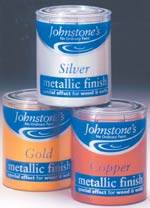Materials
‘Self-Reinforcing’ Thermoplastic Is Harder, Stronger, Stiffer Without Added Fibers
By the end of 2003, sample quantities will become available of a specialty high-performance thermoplastic whose inventors call it the first readily processable rigid-rod polymer.
Read More'Father of Long Glass' Delivers a New Baby
Ron Hawley's lawyer keeps a collection of napkins and other bits of paper on which, over the years, Hawley drew the first sketches of a remarkable series of inventions.
Read MoreWhy Long-Glass Molders Are Compounding In-Line
Compounding raw fiberglass directly into thermoplastic molded parts is growing rapidly in Europe, and now it’s coming here. D-LFT, as it’s called, promises to make large parts cheaper and stronger—but with new technological risks and higher up-front investment costs.
Read MoreSBCs Are Back With More Capacity & New Grades
Two years ago, a supply crisis struck the SBC market. Some customers were forced to switch to other materials. Today, SBC producers hope to lure back processors with a surge of new resin capacity, new domestic suppliers, and new grades and applications.
Read MoreMetallocene VLDPE Is a Tough New Contender for Flexible Packaging
A new metallocene catalyzed, very-low-density polyethlyene (mVLDPE) from ExxonMobil Chemical Co., Houston, reportedly offers the excellent toughness associated with mLLDPE plus lower heat-seal temperatures and other advantages over conventional Ziegler-Natta VLDPEs or ULDPEs for flexible packaging.
Read MoreBlow Molding Gets Green Light in Detroit
Technical blow molding is changing the contours of automotive interior trim, load-bearing floors, seat-back systems, and under-hood ducting. Favorable economics, process refinements, and the emergence of tailored materials and equipment are taking the brakes off blow molding's earlier limits, and pointing a way to cost cutting.
Read MoreNanocomposites Broaden Roles in Automotive, Barrier Packaging
Nanocomposites are gradually gaining acceptance in the mainstream of global plastics processing. These polymer compounds, containing relatively low loadings (under 6% by weight) of nanometer-sized mineral particles, are beginning to show up in polypropylene and TPO-based automotive exterior claddings, barrier beer bottles, nylon packaging films, polyethylene pipe and wire/cable coatings, and more.
Read MoreIn-Line Compounding of Long-Glass/PP Gains Strength in Automotive Molding
Another approach to long-fiber thermoplastic (LFT) molding is gaining credibility for producing a range of structural and semi-structural automotive parts. It is called direct LFT processing, and is already widely practiced in Europe.
Read MoreMaterials (K 2001 Preview)
New materials at K 2001 are weighted heavily toward the engineering variety, especially nylons, acetals, and TP polyesters. A large handful of polypropylenes round out the major news.
Read MoreSee-Through Plastic Cans Enliven Paint Packaging
Improved technologies for molding see-through plastic paint cans—both clear stretch-blow molded PET and translucent injection molded PP—are adding dash to paint marketing in the U.K. These trends present a lively example to the U.S., where gray steel cans still dominate the shelves in retail paint packaging.
Read More

















